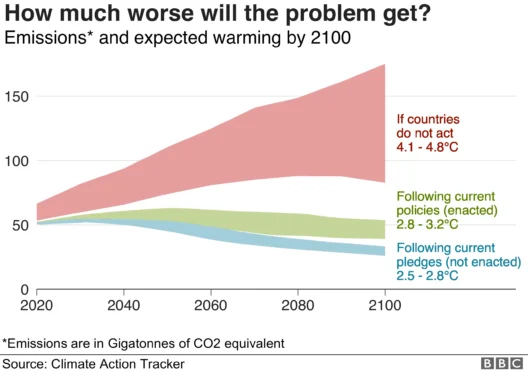Rick Scott, the former governor of Florida and current U.S. senator, has undergone a significant evolution in his stance on climate change and global warming. This transformation is particularly noteworthy given Florida’s vulnerability to the impacts of climate change, such as rising sea levels, increased hurricane intensity, and extensive flooding. Delving into Scott’s climate record reveals a complex tapestry woven from political pressure, emerging scientific consensus, and the realities faced by his state.
Initially, Scott’s tenure as governor from 2011 to 2019 was marked by a palpable reluctance to openly acknowledge climate change. During these early years, his administration often sidestepped references to global warming. Reports surfaced that the Florida Department of Environmental Protection had been instructed to avoid using the terms “climate change” and “global warming” in communications and on agency materials. Such directives sparked outrage among environmentalists, scientists, and concerned citizens alike.
Ironically, these actions coincided with a period of heightened public awareness of climate issues. The frequency of extreme weather events had begun to alarm many. The consequences of climate change became increasingly visible, not just in hurricanes impacting the Florida coast but also through longer droughts, worsening water quality, and threats to local ecosystems. This growing urgency had implications for Scott, who represented a low-lying state heavily affected by climate dynamics.
In 2016, Scott’s approach began to shift. Facing mounting pressure from constituents and environmental organizations, he began to articulate his acknowledgment of climate change. During this time, he emphasized adaptation and resilience—strategies aimed at mitigating the effects of climate change rather than confronting its underlying causes. His administration allocated funds to environmentally-focused projects under the guise of bolstering infrastructure against impending climate threats.
This pivot illustrated the political calculations at play. While some voters remained skeptical of climate science, the demographic trends in Florida clearly favored a more proactive stance on environmental issues. Increasingly, younger voters and coastal residents were voicing their concerns about climate change, demanding that their leaders prioritize sustainable policies. In response to these demographic shifts, Scott attempted to balance the conservative agenda with the environmental imperatives presented by the electorate.
In 2018, amid his campaign for a U.S. Senate seat, Scott capitalized on this evolving narrative. He publicly committed to combating climate change, yet his proposals remained heavily focused on funding for infrastructure resilience rather than initiating sweeping policy changes addressing greenhouse gas emissions or renewable energy investments. This duality in his rhetoric—acknowledgment coupled with an avoidance of aggressive action—became a recurring theme in his political strategy.
Moreover, Scott’s financial ties further complicated his position. His historical connections with the fossil fuel industry sparked skepticism regarding his true commitment to environmental advocacy. Critics argued that his support for policies enhancing fossil fuel extraction over renewable energy projects conflicted with the urgent need for a transition towards sustainable energy sources. These contradictions raised questions about the authenticity of his climate rhetoric. While Scott’s acknowledgment of climate change might be considered progress by some, many viewed it as a superficial adaptation to shifting political winds.
As he transitioned into the role of U.S. senator, Scott’s climate record continued to reveal a complicated dichotomy. His committee assignments, including a focus on commerce and technology, suggest a potential for influence in energy policy. However, his voting history has often aligned more closely with conservative party lines, particularly those regarding environmental deregulation. This tendency reflects a larger trend among some politicians, who may recognize climate change as a reality but resist substantive legislative efforts to combat it, largely due to party loyalty and donor interests.
Nevertheless, there is an ongoing dialogue surrounding Scott’s evolving position, highlighting what can be perceived as a constructive yet insufficient engagement with climate issues. Advocates for climate action remain vigilant, challenging lawmakers to translate acknowledgment into tangible policy changes. Scott’s journey illustrates a larger societal reckoning—a recognition that failure to address climate change can have dire implications. As more evidence mounts and public awareness increases, politicians, including Scott, will find it increasingly untenable to disregard the urgency of climate stability.
The ramifications of inaction extend beyond political consequences; they resonate deeply within the fabric of society. This is particularly evident in low-income communities and communities of color which often bear the brunt of climate change impacts. A comprehensive approach to climate change must prioritize equity and justice, ensuring that those most affected have a voice in the conversations surrounding solutions.
In conclusion, Rick Scott’s political journey reveals a reflection of broader societal dynamics concerning climate change. Although he has acknowledged the existence of global warming, the depth of his commitment remains ambiguous. His record raises critical questions about the intersection of politics, public perception, and the pressing need for effective climate action in a state that epitomizes the frontline of environmental challenges. As the climate discourse continues to evolve, every leader’s true commitment to sustainability will be scrutinized—not just for what they say, but for the policies they promote and the interests they serve.







